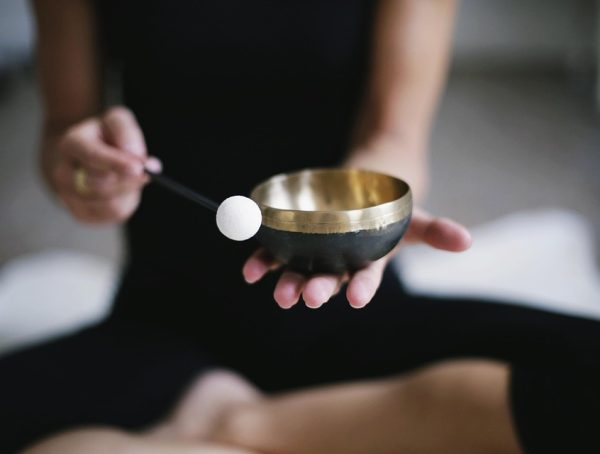The 7 Types of Meditation: Which One is Right for You?
Meditation has become a sanctuary in our fast-paced world, offering a space for reflection, relaxation, and personal growth. More than just a form of practice, meditation comes in many forms, each with its unique purpose and techniques. With so many options available, it can be overwhelming to choose which type of meditation might be right for you. Below, we’ll explore seven popular types of meditation, so you can discover your ideal practice, along with actionable steps to help you get started.
1. Mindfulness Meditation
Overview:
Mindfulness meditation is about being present in the moment and observing your thoughts without judgment. It stems from Buddhist traditions and encourages practitioners to focus on their breath and feelings.
Action Steps:
- Set a Timer: Start with just 5-10 minutes a day.
- Focus on Your Breath: Inhale deeply and observe the sensation of the breath entering and leaving your body.
- Notice Your Thoughts: When distractions arise, acknowledge them and gently guide your focus back to your breath.
2. Guided Meditation
Overview:
Guided meditation uses visualization and visualization techniques to lead you through scenarios or experiences, often led by a teacher or audio recording. This is great for beginners.
Action Steps:
- Find a Recording: Search for beginner-friendly guided meditations on platforms like YouTube or meditation apps.
- Set Aside Time: Dedicate a quiet space and time for your practice.
- Engage with the Experience: Close your eyes and immerse yourself in the visualization, allowing the narrative to guide you.
3. Transcendental Meditation (TM)
Overview:
TM is a specific form of silent mantra meditation developed by Maharishi Mahesh Yogi. It involves the repetition of a designated mantra to settle the mind.
Action Steps:
- Learn the Technique: While TM is traditionally taught through certified instructors, numerous resources explain the basics.
- Choose Your Mantra: Find a word or phrase that resonates with you; it could be a simple sound or a meaningful word.
- Practice Regularly: Aim for 20 minutes, twice a day, in a quiet space.
4. Loving-Kindness Meditation (Metta)
Overview:
Loving-kindness meditation focuses on developing an attitude of compassion and love towards oneself and others, gradually expanding these feelings to friends, family, and even neutral individuals.
Action Steps:
- Begin with Yourself: Sit quietly, close your eyes, and silently repeat phrases like “May I be happy” or “May I be safe.”
- Expand Your Circle: Gradually direct these thoughts to loved ones, acquaintances, and eventually, even those you find challenging.
- Feel the Love: Allow the feelings of compassion to fill your heart and mind.
5. Body Scan Meditation
Overview:
Body scan meditation is a practice of developing awareness of the physical sensations in the body, helping to release tension and promote a sense of relaxation.
Action Steps:
- Lie Down Comfortably: Choose a reclined position where you can fully relax.
- Focus on Each Body Part: Starting at your toes, systematically move your focus upward, noticing sensations or tension in each area.
- Release and Relax: As you scan, consciously relax areas that feel tense.
6. Zen Meditation (Zazen)
Overview:
Zen meditation, or Zazen, is a seated meditation practice that emphasizes posture, breathing, and presence. Its focus is often on simply sitting and observing thoughts as they arise.
Action Steps:
- Find Your Position: Sit on a cushion or chair with a straight back, hands resting in your lap.
- Practice Breath Awareness: Concentrate on your breathing or the sensations of your body as you sit.
- Sit in Silence: Allow thoughts to drift without engaging with them, returning your focus to your breath.
7. Movement Meditation (Yoga, Tai Chi)
Overview:
Movement meditation combines physical movement with meditative awareness. Practices like yoga and Tai Chi integrate breath and movement to foster mindfulness.
Action Steps:
- Join a Class or Online Session: Look for local yoga or Tai Chi classes or find online sessions that suit your level.
- Emphasize the Breath: Synchronize movement with your breath; inhale as you move, exhale as you still.
- Stay Present: Focus on the sensations in your body during movements and transitions.
Conclusion: Choosing Your Path
Finding the right type of meditation for you may take time, and it’s perfectly okay to try different methods until you discover what resonates. Remember that meditation is a personal journey; there’s no right or wrong way to practice. Whether you have a few quiet minutes or can carve out longer sessions, every effort contributes to your overall well-being.
Start your journey today, and over time, you will likely notice profound changes in your mental clarity, emotional stability, and overall sense of peace.
"The mind is everything. What you think, you become." – Buddha
For more insightful content on health and wellness, follow Kevin on Instagram at @KSteineman. Your journey towards a healthier, happier you starts with the decision to take that first step!
You might also like
More from Meditation
The Role of Mantras in Transcendental Meditation: A Deep Dive
The Role of Mantras in Transcendental Meditation: A Deep Dive Transcendental Meditation (TM) has garnered a significant following across the globe, …
The Science Behind Meditation: Improving Mental Health Naturally
The Science Behind Meditation: Improving Mental Health Naturally In today's fast-paced world, the pursuit of mental wellness has become paramount. Thousands …
Understanding the 7 Types of Meditation for Beginners
Understanding the 7 Types of Meditation for Beginners: A Path to Inner Peace Meditation has become a popular practice in recent …


































